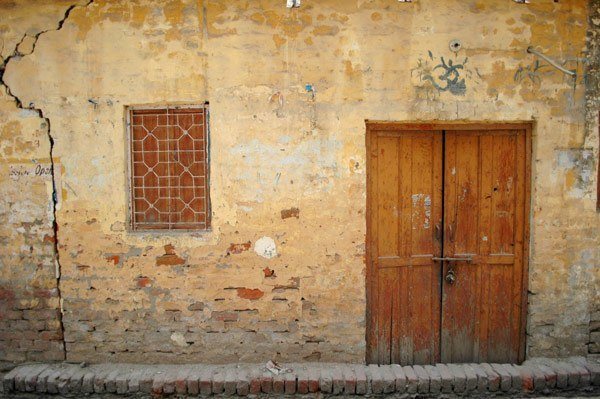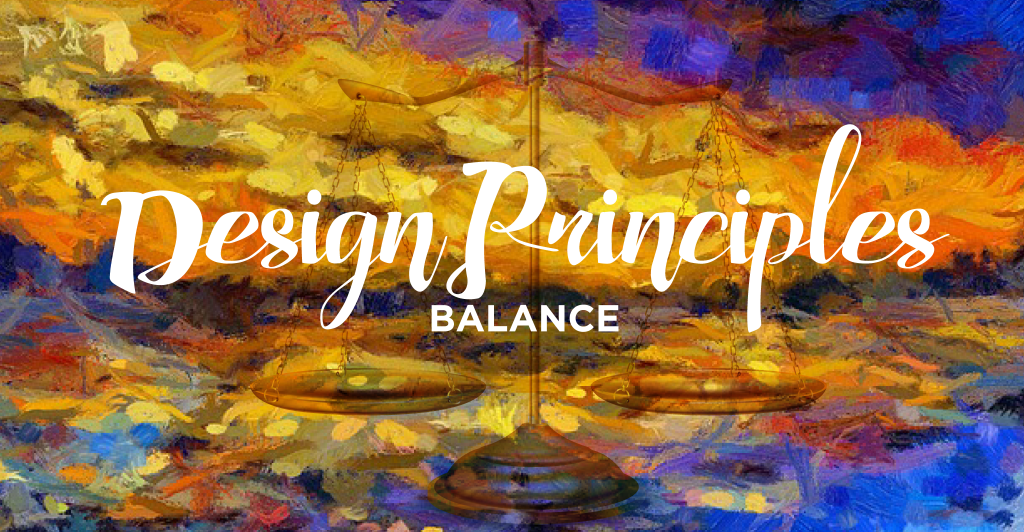In today’s society, there is a lot of talk about a need for balance. Balance between work life and home life. Balance between funny and serious; a balanced diet. A balanced checkbook. A balanced lifestyle. We need balance.
More...
Like life, design is no different. Effective art requires equilibrium. Stability. Balance is one of the necessary principles of design – one of those guidelines used to put the elements of art and design together more effectively.
So what is balance in art? It is the equal distribution of visual “weight” in art, and it occurs around a vertical axis. Our brains like it when visual weight is equal on both sides of this axis. Because God has created humanity to be bilateral (involving two sides), our sense of balance is instinctive. When something is imbalanced, the effect is unsettling and makes us uncomfortable. However, this does not mean that both sides of the axis have to be exactly the same. Read on to learn about the four different types of balance in art.
Radial Balance
One common kind of balance is called radial balance. This is when different elements are arranged around a central point. This is achieved when objects are placed in such a way that the visual weight is distributed equally. Radial balance creates a strong focal point in the center of the object. A clock is an example of this.

Radial Balance
Symmetrical Balance
Symmetry, also known as formal balance, is the easiest way to achieve stability. It is created by producing the reverse of an image (or a mirror-image) on the opposite side of a vertical axis. Symmetry is formal, ordered, stable, and quiet. Because it is stable, it is often used in architecture.

Symmetrical Balance seen in the Taj Mahal
Asymmetrical Balance
What symmetry achieves through the repetition of a design on the opposite side, asymmetry accomplishes through contrast. While symmetry is formal, asymmetrical balance in art is informal. It involves balancing an axis by the summing up of different elements on both sides with equal visual weight. Think of two sides of a balanced scale. Where symmetry balances the exact same thing on both sides, asymmetry may have one larger item on one side and two smaller items on the other.

Asymmetrical Balance in Art
Crystallographic balance
A final type of balance in art is called crystallographic balance, or an allover pattern. This is found in a quilt or a chessboard and consists of repeating objects with equal visual weight. This kind has no focal point because emphasis is uniform.
Visual Weight
I’ve been talking a lot about balance consisting of two sides with equal visual weight. But what exactly is visual weight and how is it created? Visual weight is created and influenced by many things. Below is a list and an explanation of a few.
- Position. This is the position of an object in relation to the center. The further an element is from the center, the heavier it will feel. A larger object near the center can be balanced by a smaller object near the perimeter. (See the asymmetrical balance photo above.)
- Size. A larger object is heavier than a smaller object.
- Isolation. An object by itself will draw more attention, and thus has greater visual weight.
- Texture. A complex texture is heavier than a simple texture.
- Value. The darker a color is, the heavier it is.
- Value contrast. A greater value-contrast equals a greater visual weight.
- Orientation. Diagonals are more dynamic, and thus heavier, than horizontal or straight.
- Quantity. More objects equal more weight. However, multiple small objects can balance one large object.
- Shape. Once again, more complex is heavier than simple. And finally,
- Color. The brighter, more intense, or more saturated the color is, the heavier it is.
What Does this Mean?
As I was thinking about balance, I was thinking about how integral a part it plays in God’s universe. Every day, our radially symmetrical earth rotates once on a vertical axis. Balance is ordered and stable; our universe is ordered and stable.
All of society’s hype today about our need for equilibrium points to the fact that we were made in the image of God. Our need for balance is innate because God made us as fundamentally bilateral beings. God made the universe to have balance, and because of this, imbalance makes us uncomfortable. From this we learn that studying the principles of design is more than learning simply about art.
Studying the principles of design gives us insight into who God is as the Creator, the first Designer.

